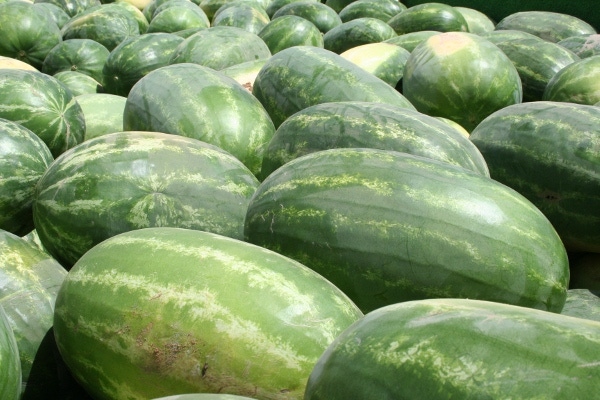
Arizona Veg IPM: botrytis leaf blight, herbicide carryover, whitefly sampling
Botrytis leaf blight, caused by the fungus Botrytis squamosa, is a disease that can occur in Arizona and California desert onion plantings.Almost all herbicides used on lettuce, cole crops, and melons have restrictions on how soon wheat can be planted in rotation after use.In vegetable production, whiteflies damage and kill crops by sucking sap, spreading viruses, and excreting a sticky substance called honeydew.
December 17, 2010

The latest Arizona Vegetable Integrated Pest Management Update from the University of Arizona Cooperative Extension in Yuma, Ariz.
Botrytis leaf blight on onions
By Mike Matheron, UA Extension Plant Pathologist
Botrytis leaf blight, caused by the fungus Botrytis squamosa, is a disease that can occur in Arizona and California desert onion plantings.
Initial symptoms on leaves are the appearance of small white sunken spots about 1/8th inch in diameter surrounded by a light green halo from 1/16 to 1/8 inch wide. The presence of this halo is diagnostic for leaf blight and can help distinguish between leaf blight lesions and necrotic spots caused by herbicides, mechanical damage, or insect feeding sites.
With age, the halo may disappear and the lesions may expand in size to a width of about ¼ inch and a length of about 5/16 inch. Development of these spots requires a wet leaf surface (due to rainfall, dew, or sprinkler irrigation) for at least 20 hours.
Under prolonged moist conditions at temperatures ranging from 54 to 76 degrees F., the fungus can develop rapidly and cause blighting and eventual leaf death. Botrytis leaf blight can cause quality loss on green onions where foliage condition is a primary market factor. On a dry bulb crop, premature leaf death can result in yield loss due to smaller bulb sizes.
Effective management of Botrytis leaf blight with fungicides requires initiating applications when the disease symptoms first become visible.
In growing areas with frequent periods of foliar moisture due to rainfall, dew, or sprinkler irrigations, establishing plantings in single rows spaced at least 12 inches apart, compared to multiple-row plantings, can facilitate more rapid leaf drying and reduce infection. A rotation with non-susceptible crops will also prevent the buildup of the pathogen in the soil.
Contact Matheron: (928) 726-6856 or [email protected].
Carryover of vegetable herbicides to wheat grown in rotation
By Barry Tickes, UA Area Agriculture Agent
Almost all herbicides used on lettuce, cole crops, and melons have restrictions on how soon wheat can be planted in rotation after use. Experience has demonstrated that safe intervals can vary considerably based upon many factors and are almost always much longer than they need to be.
The most important factors are the rate applied, irrigation practices, and tillage. For example, when the herbicide Kerb was banded at two to four pounds per acre after planting and incorporated with furrow irrigation, it was common to see treated strips across the wheat fields which followed. This is uncommon now with lower rates that are chemigated.
We still see some Balan injury at the ends of fields or in overlaps especially when Sudangrass is planted. Wheat is not very sensitive to Prefar and carryover injury is uncommon.
Contact Tickes: (928) 580-9902 or [email protected].
Adult whitefly sampling with a vacuum
By Marco Peña, UA Research Specialist
Those involved in vegetable production know that whiteflies damage and kill crops by sucking sap, spreading viruses, and excreting a sticky substance called honeydew.
In 1992, the sweet potato whitefly (SPW), Bemisia tabaci, was considered an occasional virus vector. Today the SPW is one of the main pests in desert melons and vegetables.
Spraying is a fairly effective control method. But whiteflies could develop resistance and new biotypes have been discovered recently. John Palumbo, UA research scientist and extension specialist, is conducting efficacy experiments developing new methods to improve whitefly population management.
There are different methods to monitoring the adult SPW. Yellow sticky traps can monitor adult flight activity. Sampling for adults and immature SPW should be centered on young foliage.
The most practical method to sample for SWF is to turn the leaves carefully when the insect is active in the early morning. This method is also used in UA experiments for evaluating the efficacy of the new chemicals against SPW.
I would like to describe a different method used by researchers inside and outside the UA to sample cantaloupe whitefly efficacy with a vacuum. This is done at the Yuma Agricultural Center using a heavy duty two-gallon cordless wet dry vacuum powered by an 18-volt battery. Plastic cups are properly labeled with the treatment and replication number for insect collection.
Cups are placed in the suction hose. The cups have a nylon mesh at the bottom which prevents the insects from going into the vacuum deposit. Each plant is vacuumed for three seconds. Usually five plants are sufficient with a good whitefly population. Lids are placed on the cups.
To identify by species and count numbers, the cups are placed in a freezer for about one hour. The contents are then evaluated under a stereomicroscope. The data is analyzed by the researcher. The lower numbers are the most efficacious products for whitefly control. Recommendations are available to pest control advisers and growers.
Contact Peña: (928) 782-3836 or [email protected].
You May Also Like



